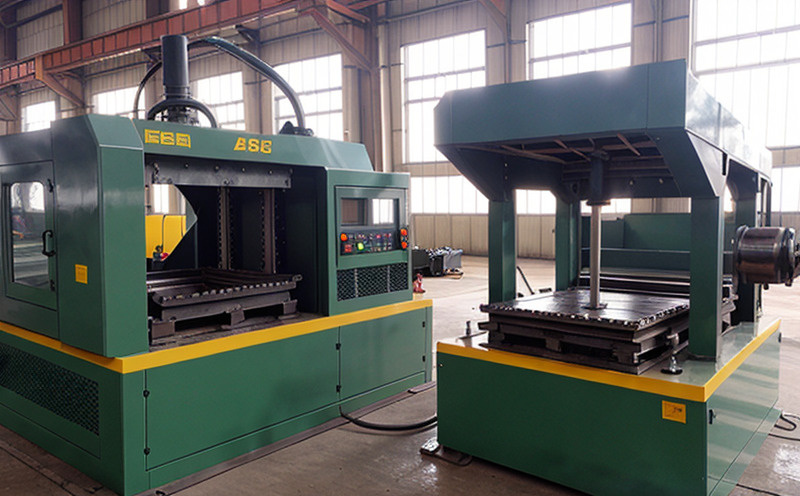ISO 4545 Knoop Hardness Testing of Formed Materials
The ISO 4545 standard defines the procedure for performing Knoop hardness testing, which is particularly useful in assessing the hardness of formed materials such as forgings and stamped parts. This method provides a precise measurement of material properties that are crucial for ensuring quality control and compliance with industrial standards.
Forging, stamping, and forming processes involve shaping metal into specific shapes by applying mechanical pressure or heat. These processes can significantly alter the microstructure of metals, affecting their hardness and other mechanical properties. Knoop hardness testing is a non-destructive method that allows for the evaluation of these changes without compromising the integrity of the product.
The Knoop indenter used in this test is characterized by its pyramidal shape with an angle of 130° between opposite faces, which results in a diamond-shaped impression. The indentation depth and length are measured to calculate hardness using the formula specified in ISO 4545:
H(K) = (1018 / L) × (D/L)^2
where H(K) is the Knoop hardness number, D is the depth of the indentation, and L is the length of the longer diagonal of the impression. The test can be performed on various materials including steels, aluminum alloys, copper alloys, brasses, and other metals.
The testing process involves several steps:
- Selection of appropriate indenter type based on expected hardness range.
- Cleaning the surface to ensure accurate measurements.
- Applying a specified load for a set dwell time (typically 10-15 seconds).
- Measuring both the depth and length of the indentation using a microscope or automated system.
- Calculating the Knoop hardness number from these measurements.
This test is particularly valuable for industries where precise material hardness is critical, such as automotive manufacturing, aerospace engineering, and general industrial fabrication. It helps manufacturers verify that their processes meet required standards and ensures consistent product quality across batches.
Applied Standards
The ISO 4545 Knoop Hardness Testing of Formed Materials is widely recognized in industries that require stringent quality control measures. It aligns with several international standards including:
- ISO 6508-1: General requirements for hardness testing.
- ASTM E2479: Standard test method for Knoop hardness of metallic materials.
- EN 10328: Hardness tests - Metallic materials - Particular methods and procedures.
These standards provide a comprehensive framework for conducting Knoop hardness testing, ensuring that results are consistent and comparable across different laboratories. Compliance with these standards enhances the reliability of test data and supports global trade by facilitating mutual recognition of test results between countries.
Why Choose This Test
Choosing ISO 4545 Knoop Hardness Testing for formed materials offers numerous advantages in the context of industrial manufacturing and processing:
- Accurate Measurement: The Knoop hardness test provides a highly precise measurement of material hardness, which is essential for ensuring product quality.
- Non-Destructive Testing: Unlike some other testing methods, Knoop hardness testing does not alter the sample, preserving its integrity and usability.
- Compliance with Standards: By adhering to internationally recognized standards like ISO 4545, manufacturers can ensure that their processes meet regulatory requirements.
- Consistency Across Batches: This test method helps maintain consistent hardness across different batches of materials, which is critical in high-volume manufacturing environments.
- Enhanced Product Reliability: Accurate hardness testing improves the reliability and performance of products by identifying potential weaknesses early in the production process.
- Cost-Effective: While it may require specialized equipment, Knoop hardness testing is relatively cost-effective when compared to other destructive testing methods that can lead to higher scrap rates or material waste.
Customer Impact and Satisfaction
The implementation of ISO 4545 Knoop Hardness Testing in industrial manufacturing processes has a significant impact on customer satisfaction and product reliability:
- Increased Customer Confidence: By meeting rigorous testing standards, manufacturers demonstrate their commitment to quality, which builds trust with customers.
- Better Product Performance: Accurate hardness testing ensures that products meet the necessary performance criteria, leading to higher customer satisfaction and repeat business.
- Reduced Warranty Claims: Consistent product quality reduces the likelihood of defects reaching the end user, thereby minimizing warranty claims and associated costs.
- Competitive Advantage: Adhering to international standards sets a benchmark that competitors must meet or exceed, providing a competitive edge in the market.





